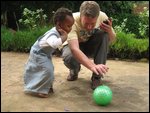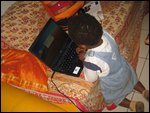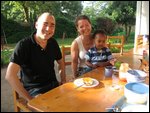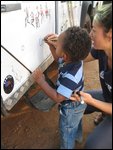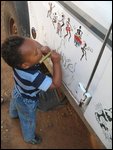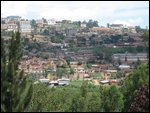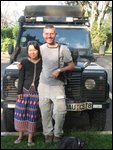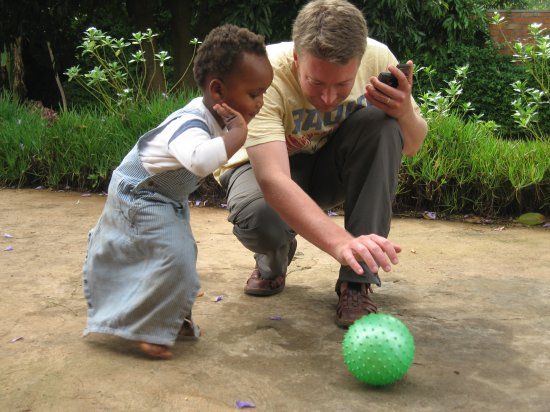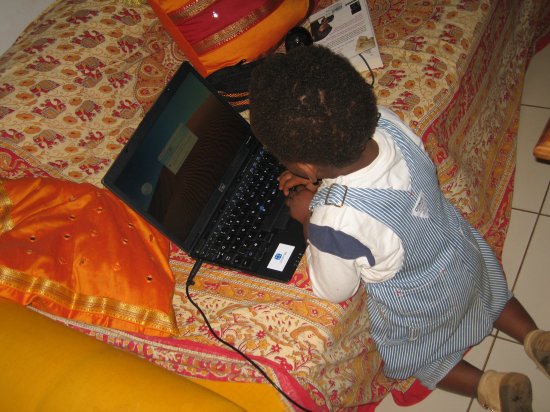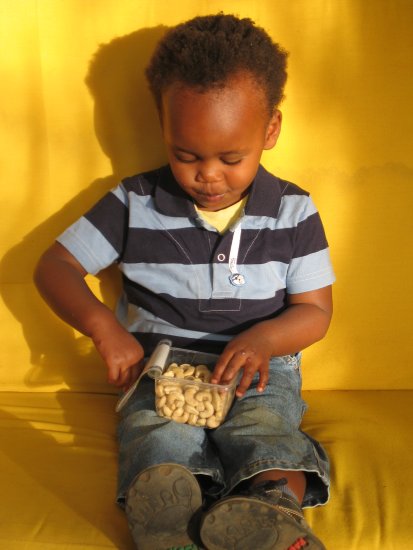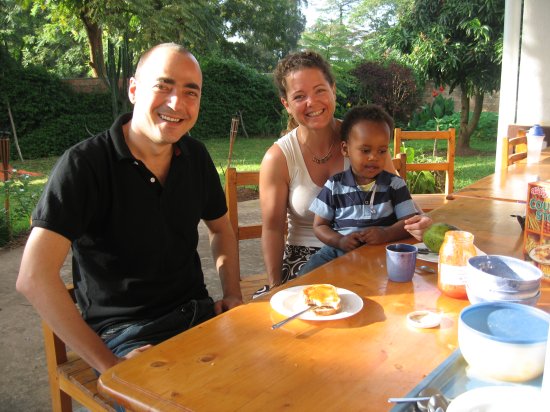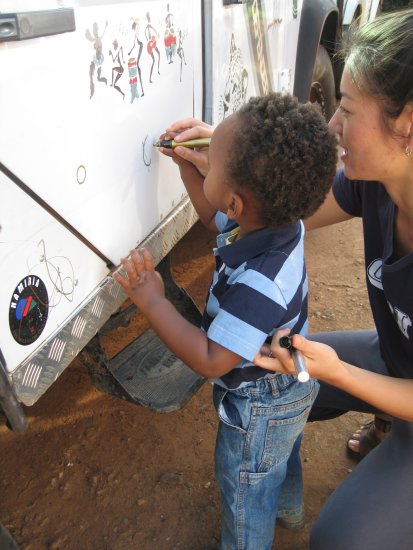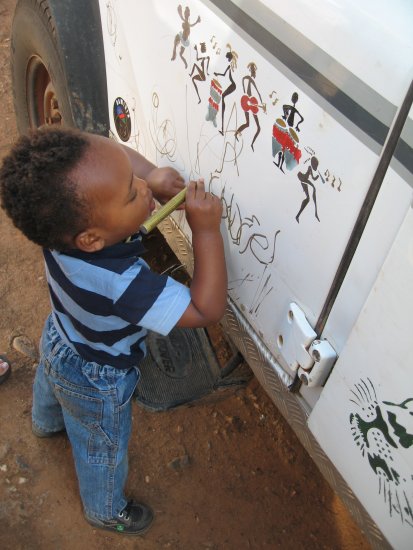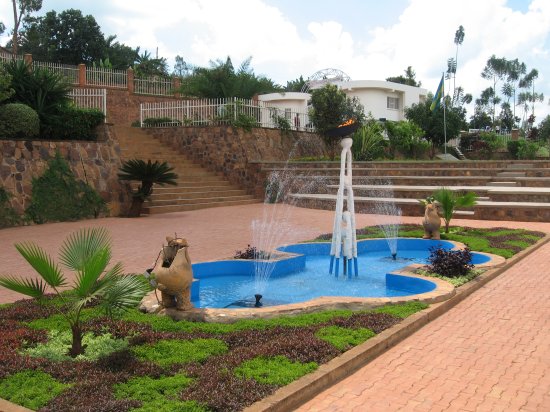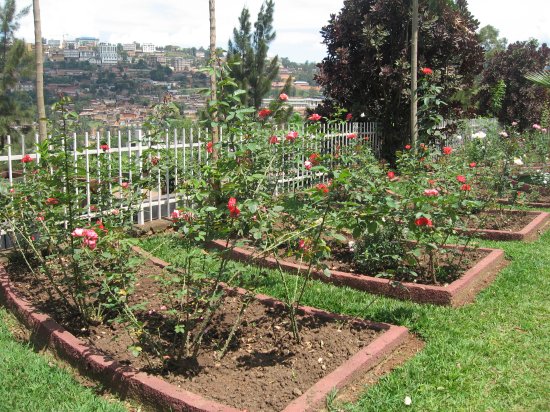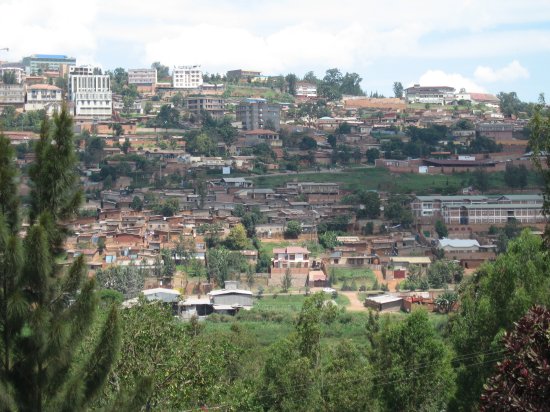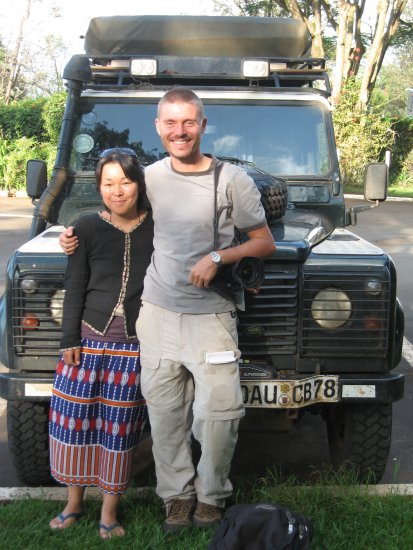This morning we woke up, marvelled at the beautiful garden and huge avocado tree, had a leisurely breakfast of fresh mangoes, cereal, toast and rich Rwandan coffee with Vero, Gabriel and Gian Pierot outside on the terrace, and then got ready to go to the Kigali Genocide Memorial Centre.
Traffic flows fairly smoothly in Kigali and a big part of that may be due to the fact that traffic regulations are actually followed here, therefore eliminating any congestion. Or maybe there are just more bicycles and motor-taxis and less private vehicles.
Although traffic may be manageable, navigating Kigali's streets is another matter. With extremely steep hills (poor Foxy was moaning and groaning almost the whole time) and roundabouts that seem to merge into other roundabouts, it can be quite confusing to get to your destination, even if it is only a couple of kilometres away.
We met Christoph and Chiho at the Genocide Memorial Centre, and while we only intended to be there for an hour or two, we stayed for nearly four.
The Genocide Memorial Centre is a comprehensive, well-organized display of pictures, videos and posters of the Rwandan genocide in 1994. There are no words for what happened. It was simply horrendous. It is estimated that 800,000 Rwandans were violently killed in just three months.
What makes this genocide so grotesque and disturbing is not just how systematic the killing was, done mainly by
Interahamwe militias of gangs of youth, but that it was so violent, so cold-blooded, and so brutal. Many of the deaths were caused by machetes, spears, and other blunt objects, meant to torture and inflict as much pain and suffering as possible to the victims before they were left to die.
The UNAMIR (UN Assistance Mission for Rwanda) was present during the genocide but was powerless to prevent any of the killings because of an ineffective mandate. There has been much criticism directed at the international community, who did virtually nothing.
In the museum there are pictures of the victims, too many of them children; clothes that were found on bodies in mass burial pits; video testaments of survivors and how they have coped with the massacre; and in the memorial garden, lies the remains of 250,000+ victims.
We were very impressed with the museum. It must have been quite a task to present the horrific event in a way that is true and honest, without needing to "shock and awe" with too many graphic pictures. The thousands of innocent (young) lives lost is enough to make anyone wonder why and how humans continue to cause such pain to each other after such an event.
What was also quite impressive was that, upstairs in the museum, there were displays of other acts of genocide around the world, detailing the history and events leading up to it.
Today, Rwanda has done an amazing job of getting life back on track. The government has been quite strict and many basic laws that people adhere to (perhaps out of fear?) are lacking in other African countries. For example, all the motor-taxi drivers wear a vest with an assigned registered number and you never see a driver or his passenger without a helmet.
Once a month, all Rwandan residents (locals AND foreigners) go out on the streets and clean up their neighbourhood. No one is exempt.
And if you are caught walking through public gardens or traffic islands (which are made of healthy-looking grass and pretty flowers), you get fined $300 US on the spot.
It is quite a shock for us to see such order in a country; perhaps after such hell on earth, people yearn for some sort of order from a leader they respect. Or is it?
People have told us that although things may appear all peaceful and organized on the surface, tensions are still brewing and it may be only time before something explodes again.
Coincidentally, a good article was published on the online Guardian newspaper recently. Read: We Have to Kill Tutsis Wherever They Are.
After a leisurely lunch with Chris and Chiho at the Milles Collines Hotel (the only place on a Sunday you can change American dollars), we went back to Vero's home and prepared dinner for all of us: a stir-fry concoction of fish, veg and rice.
Start: -
End: -
Distance Traveled: 20 km
Road Conditions: just around Kigali, a fairly small town with lots of steep hills and confusing roundabouts.
Temperature: heavy thunderstorm in the afternoon, literally a wall of water
